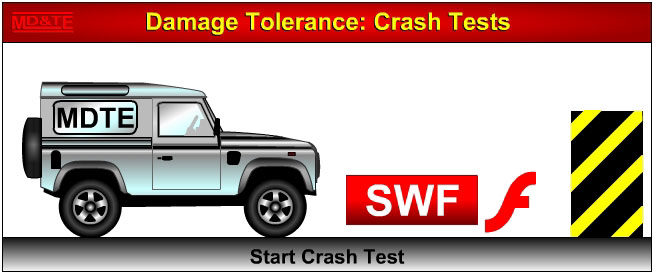ToleranceWe consider two types of tolerance in design and resistant materials technology. One type of tolerance relates to the permitted upper and lower size limits of components. The other type of tolerance relates to the amount of force that a structure can withstand or tolerate before structural failure occurs. Damage Tolerance
|
||||||||||||
 Click on the screenshot above to view the "Crash Test" animation by Laszlo Lipot |
||||||||||||
|
||||||||||||
The force may be constant or recurring e.g. vibration or hammering. A final important consideration is the strength left in the structure after the damaging force has been applied. The strength of a structure and its damage tolerance depends on many things, including:
What is a Force? Click the link to view an animation illustrating compression, tension, torsion, shear and bending forces. What is a load? Click the link to view an animation and description of a static load and a dynamic load acting on a structure. What is "Factor of safety"?. Click the link to view a description of Factor of Safety. |
||||||||||||
|
||||||||||||


